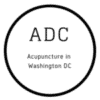
Traditional Chinese medicine – Washington DC : natural healing- TCM
Traditional Chinese medicine (TCM) is the set of health theories and practices throughout the history of the Chinese world (area of influence of Chinese civilization). In a broad sense, this medicine includes the oral, folk, magical or religious traditions of the different ethnic groups and communities that make up the Chinese world.
In a more classical sense, traditional Chinese medicine refers to an impressive corpus of texts (written tradition), the first of which are dated around the fifth century BC. Chinese medicine was then one of the three great traditional medicines with that of the Mediterranean world (galenics) and that of India (ayurveda).
During the 20th century, classical traditional Chinese medicine was perceived, and more or less recognized, as an alternative or complementary system to modern medicine (in popular China, according to countries including Western countries, according to the WHO…). It then falls within the scope of non-conventional medicines.
This medicine is composed of several disciplines including pharmacopoeia, massage and energy exercises (qi gong, taiji quan, kungfu…), dietetics, acupuncture and moxibustion.
In addition to the history of Chinese medicine, many therapies are nowadays offered under the label of « traditional Chinese medicine », inspired more or less freely by elements of this tradition without updating for essentially folk or commercial reasons1, and constitute a pseudo-science2,3, sometimes with deleterious effects on potential patients4.
There is no consensus on the definition of what constitutes a medicine, neither traditional medicine nor traditional Chinese medicine. According to WHO:
« Traditional medicine TCM is the total sum of knowledge, skills and practices, based on the theories, beliefs and experiences of different cultures, whether explicable or not, used both for the maintenance of health and for the prevention, diagnosis, improvement or treatment of physical and mental diseases ».5
A traditional medicine could be a historical medicine practising its own past, whereas, from this point of view, scientific or biomedical medicine practices its present by questioning itself. A traditional medicine would be a « cultural system », linked to a particular community, whereas biomedicine is universal and transcultural.
In the first approach, a distinction is made between cultural health practices and systems based solely on oral tradition (so-called traditional folk medicine) and those based on texts (traditional learned medicine). Historically, there are three major scholarly medical traditions belonging to the Oikoumenê (the whole human race) of the ancient Greeks, which includes the civilizations of Africa and Eurasia: around the Mediterranean (mainly represented by Galenism), in India and South Asia (Ayurveda), and in the Chinese world, Central and Southeast Asia (traditional Chinese medicine)6.
These three great traditions are relatively independent, but with some interconnections. Arab medicine belongs to the gallery, but due to the extension of Islam, it can be part of Asian medical systems under the term Yunâni medicine. Similarly, the extension of Buddhism from India to China has led to exchanges between Ayurvedic and Chinese medicine, which are characteristic of Tibetan medicine6.
These three major medical traditions have evolved in a similar way, more or less synchronously. Between the 5th century BC and the 5th century AD, these carers became « professionals » trained on the basis of respected and authoritative rational texts. They are distinguished from witches and diviners, rebutters and occasional empirical caregivers (domestic medicine). They want to obtain a higher social status, justified by an ethical code specifying their behaviour and responsibility. This distinction, which is expressed in the texts, is not necessarily in line with reality. Indeed, « learned » medicine has hardly been dominant in the actual health practices of traditional (historical) societies6.
Chinese medicine
Chinese medicine, or « medicine in the Chinese space », takes two forms, the first of which is popular medicine based on family recipes from rural communities as well as magical and religious practices, dating back to shamanism, or based on Buddhism and Taoism7.
Traditional Chinese medicine itself would be « classical Chinese medicine », the one based on an important literary corpus and expressed by Chinese government officials (« mandarins »)7. It has undergone a major evolution during its history, while preserving certain basic principles from antiquity; likewise, it has been traversed by contradictory currents, and the different approaches that animate it have all known times of glory and disgrace8.
There are several Western approaches to Chinese medicine. At the beginning of the 20th century, at the height of the colonial empires, the question of the « stagnation » of the Muslim, Hindu and Chinese worlds was raised, which seemed obvious in relation to the industrial and scientific revolution in the West, which meant the inferiority of these civilizations and their medicines9.
In reaction, during the 20th century, authors such as Joseph Needham wanted to insist on the contributions of Chinese sciences, to show how they could influence or prepare, to be the precursors of a universal science (« Chinese inventions »). In the medical field, several Western authors then selected from Chinese texts anything that was likely to prefigure data or a modern medical concept9.
In the societal field, in the second half of the 20th century, in both the West and in popular China, Chinese medicine was presented as a unique and coherent system that could offer an alternative or new perspectives to contemporary medicine. Traditional Chinese medicine is then situated in the problem of non-conventional or alternative and complementary medicines. It is studied for practical purposes, which is why it can be useful in prevention or therapy10.
At the end of the 20th century
Source and complete page : wikipedia fr . Content not modified. Licence https://creativecommons.org/licenses/by-sa/3.0/deed.fr
